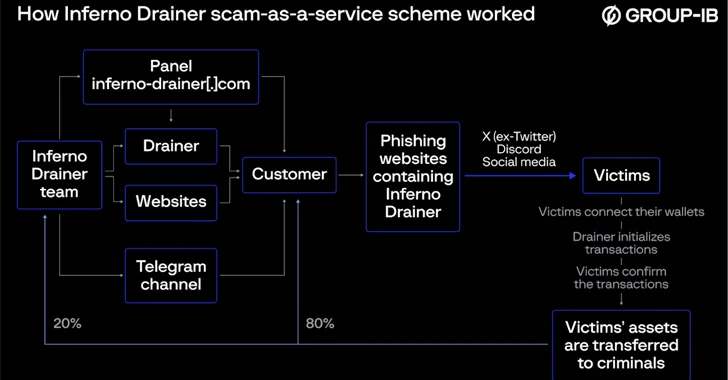Security News
Apple Issues Patch for Critical Zero-Day in iPhones, Macs – Update Now
Apple on Monday released security updates for iOS, iPadOS, macOS, tvOS, and Safari web browser to address a zero-day flaw that has come under active exploitation in the wild.
The issue, tracked as CVE-2024-23222, is a type confusion bug in the WebKit browser engine that could be exploited by a threat actor to achieve arbitrary code execution when processing maliciously crafted web content. The
Chinese Hackers Silently Weaponized VMware Zero-Day Flaw for 2 Years
An advanced China-nexus cyber espionage group previously linked to the exploitation of security flaws in VMware and Fortinet appliances has been linked to the abuse of a critical vulnerability in VMware vCenter Server as a zero-day since late 2021.
“UNC3886 has a track record of utilizing zero-day vulnerabilities to complete their mission without being detected, and this latest example further
CISA Issues Emergency Directive to Federal Agencies on Ivanti Zero-Day Exploits
The U.S. Cybersecurity and Infrastructure Security Agency (CISA) on Friday issued an emergency directive urging Federal Civilian Executive Branch (FCEB) agencies to implement mitigations against two actively exploited zero-day flaws in Ivanti Connect Secure (ICS) and Ivanti Policy Secure (IPS) products.
The development came after the vulnerabilities – an authentication bypass
Invoice Phishing Alert: TA866 Deploys WasabiSeed and Screenshotter Malware
The threat actor tracked as TA866 has resurfaced after a nine-month hiatus with a new large-volume phishing campaign to deliver known malware families such as WasabiSeed and Screenshotter.
The campaign, observed earlier this month and blocked by Proofpoint on January 11, 2024, involved sending thousands of invoice-themed emails targeting North America bearing decoy PDF files.
“The PDFs
Russian hackers stole Microsoft corporate emails in month-long breach
Microsoft warned Friday night that some of its corporate email accounts were breached and data stolen by a Russian state-sponsored hacking group known as Midnight Blizzard. […]
Read MoreCitrix Discovers 2 Vulnerabilities, Both Exploited in the Wild
These vulnerabilities are the second and third for Citrix but are not expected to be as detrimental as “CitrixBleed.”
Read MoreTeamViewer abused to breach networks in new ransomware attacks
Ransomware actors are again using TeamViewer to gain initial access to organization endpoints and attempt to deploy encryptors based on the leaked LockBit ransomware builder. […]
Read MoreInferno Malware Masqueraded as Coinbase, Drained $87 Million from 137,000 Victims
The operators behind the now-defunct Inferno Drainer created more than 16,000 unique malicious domains over a span of one year between 2022 and 2023.
The scheme “leveraged high-quality phishing pages to lure unsuspecting users into connecting their cryptocurrency wallets with the attackers’ infrastructure that spoofed Web3 protocols to trick victims into authorizing transactions,”
Windows SmartScreen flaw exploited to drop Phemedrone malware
A Phemedrone information-stealing malware campaign exploits a Microsoft Defender SmartScreen vulnerability (CVE-2023-36025) to bypass Windows security prompts when opening URL files. […]
Read MoreOver 178K SonicWall firewalls vulnerable to DoS, potential RCE attacks
Security researchers have found over 178,000 SonicWall next-generation firewalls (NGFW) with the management interface exposed online are vulnerable to denial-of-service (DoS) and potential remote code execution (RCE) attacks. […]
Read More








